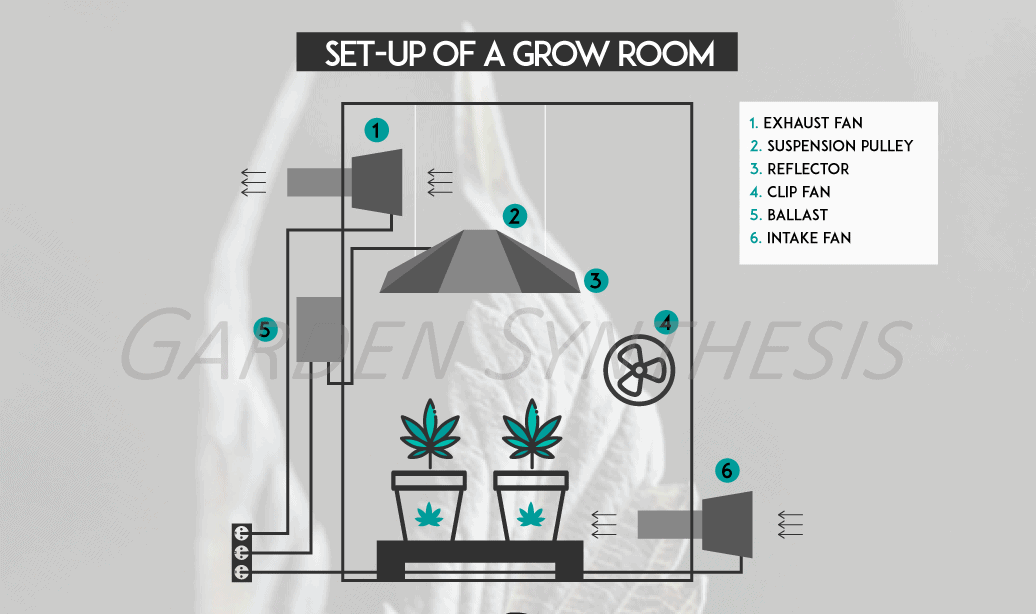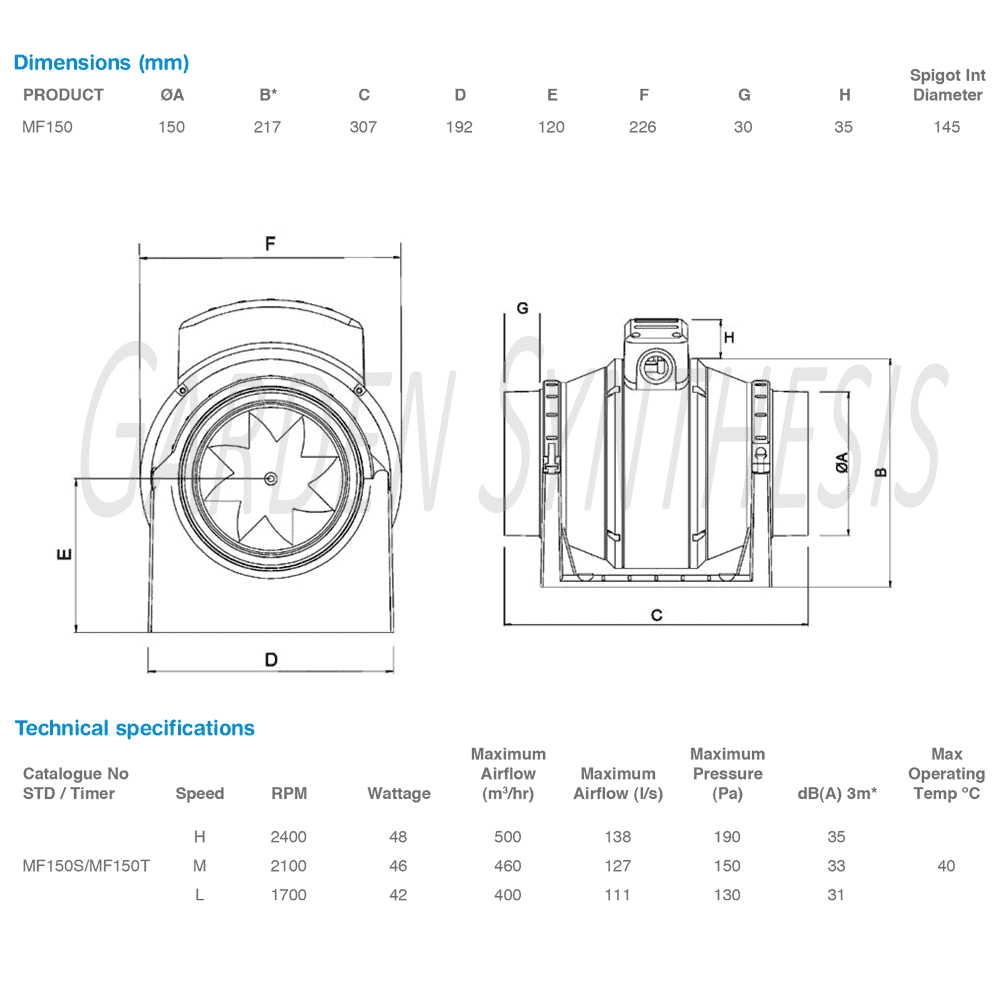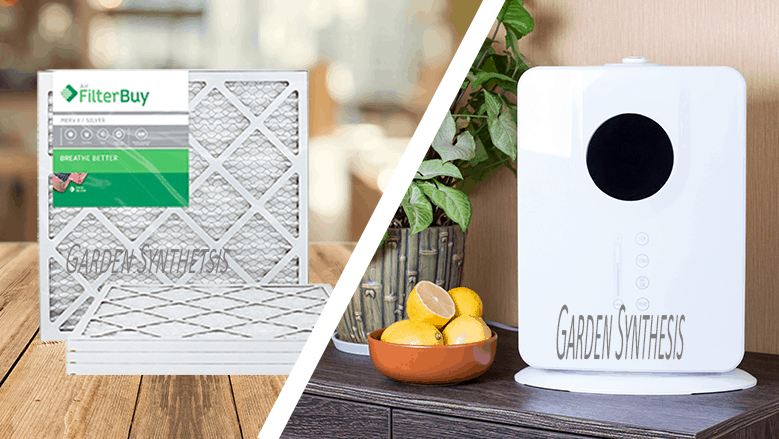An Inline Duct Fan – Everything You Should Know About It
by Lee Safin
What is an Inline Duct Fan? Why It's Been Used For?
An inline duct fan works as an exhaust fan that can expel the hot air from a closed place. To ensure optimum air circulation in a room or in a grow tent people use an inline duct fan. But the exhaust fan has an open circulating system where the inline duct fan has a closed circulating system.
As you are here, we are pretty sure that you already have a grow tent.
You are still facing a poor harvest, or your plants are weak and dying. You have set up an exhaust system to vent the hot air from the tent.
You have also kept an optimal temperature with proper lights, yet you face low output.
It is unnecessary to have a perfect setup, but you need a capable structure to grow vigorous, healthy plants and yield a good harvest.
However, in this article, we are going to show you "How To Install Inline Duct Fan In Grow Tent?" Also, we will discuss everything you need to know about an inline duct fan in this article.
Contents
- What You Should Know At First
- How To Install Inline Duct Fan In Grow Tent? (Step By Step Guide)
- Why Should There Be Air Circulation In A Grow Tent?
- Essential Parts of An Inline Duct Fan
- What Is The Difference Between An Air Purifier And An Air Filter?
- Duct Tube
- Types of Duct Tubes
- How Do I Find My Grow Tents CFM Requirement?
- How Do I Find The Volume of My Duct Tubes?
- How Does The CFM of Filters Connect With A Fan?
- Inline Duct Fan FAQ
- Wrapping Up for Inline Duct Fan Buyers

What You Should Know At First
Many new gardeners overlook a significant problem, to introduce a proper air circulation system in a grow tent. I faced this same issue during my first attempt at producing a plant using a grow tent.
Think of it like this. With a juice box, you insert a straw and pull at the straw with your mouth to drink the juice.
What happens when you keep pulling at the straw, and the juice has finished in the box?
The juice box shrivels because once the liquid is finished, you start to pull out the air.
With this same concept in mind, think of the grow tent as a juice box and your exhaust system as a straw.
Your grow tent doesn't shrivel up because it is a more firm structure, but there is a lack of air, which your plants require.
The key here is to maintain proper air circulation; the air coming in through the inline fan should be the same or a little more than the amount of air being taken out through the exhaust fan.
To know more about the best grow tent fan available in the market, check out the linked article.
How To Install Inline Duct Fan In Grow Tent? (Step By Step Guide)
Read all the steps before cutting your duct tube. It should give you a mental estimation of your duct tubes' length according to your tent setup.
Step 1. Unboxing The Fan
Unbox your fan, filter, and cut your duct tube in the appropriate size.
Step 2. Connect The Duct Tube and Air Filter
Connect a piece of duct tube to an air filter and connect the other end to your fan. Use duct clamps on both ends of the duct tube and secure them firmly.
Note
A small arrow marked on your exhaust fan should tell you the direction of airflow. Since this will be for the inflow of air, ensure that the air passage comes from the filter to the fan.
Step 3. Secure The Placement
Place the air filter and fan in such a place that the filter has access to fresh air from an open window or an outside source.
Step 4. Connect Another Duct Tube
Connect another duct tube to the other end of the fan. Use a duct clamp to secure the connection. It would be best if you pushed the other end of this duct clamp through the bottom of your tent.
Note
Your grow tent should have various openings for ventilation purposes. Once the whole setup is done, air should flow through the filter to the fan and then into the tent.
Step 5. Secure The Entry Point
Secure the entry point through which the duct tube is coming with duct tape. A duct clamp isn't advisable here.
Step 6. Attach With Air Filter
Attach a duct tube to the other remaining air filter. Now attach the air filter inside your tent on the roof.
Step 7. Secure The Exit Point
Take the duct's remaining end outside your tent through the opening in your tent roof. Secure this exit point as well with duct tape.
Step 8. Connect the Duct Tube With Fan
Attach the duct tube coming out of your tent roof to your other remaining fan.
Step 9. Give The Final Touch
Attach a duct tube to the other end of this fan and take the tube's end out through another open window.
Note
This duct tube's length doesn't add to the total CFM rating required for the fan.
However, since this is stagnant air, it is wise to vent them entirely outside the building.
The setup here should be such that air should flow from the filter to the fan.
Why Should There Be Air Circulation In A Grow Tent?

Plants require CO2 ( Carbon dioxide) to survive and give out O2, just like we humans need O2 (Oxygen) and breathe out CO2.
So when you don't circulate the air, There is an increase in oxygen levels, which is very damaging to the plants.
Lights inside the grow tent generate heat energy, which raises the temperature inside the tent.
The temperature change significantly affects plants.
Proper air circulation is the only method to lower the grow tent temperature.
Note
It is not necessary to always keep your ventilation system on. You will not be using lights 24 hours a day. Plants have specifications on how many hours of light they need.
The essential parts of both an inline and exhaust ventilation system can be broken down into four parts.
Essential Parts of An Inline Duct Fan
Inline fan
This fan's primary purpose is to pull in air from one side and vent them through the other side.
When you attach them straight, this fan will be used to draw in hot and used air (Oxygen) from the grow tent and expel them.
When you attach this exhaust fan in an inverted way, it will start drawing in the air (CO2) from the exterior and proper them inside the tent.

Air Filter
The main objective of this device is to filter particles from the air that is passing through it.
An air filter's basic constitution is charcoal ( Activated Carbon), usually encased in a cylindrical mesh.
With the air filter's proper application, you will be preventing outside smell, pollutants, contaminated air, and dust from entering your grow tent.
Sometimes the air can even carry pathogens, which can cause diseases among your plants.
I have discussed various methods to install an inline duct fan for your grow tent; this will be a lifesaver.
Some plants produce a smell that can be disturbing to the neighbours. Some plants produce spores and require pollination.
An easy solution is installing an air filter to the ventilation system that will ventilate the used air from inside the tent.
Note
Air filters are designed to have holes. Even if you are using a high-end filter, there is still a risk of pollutants passing through. Alternatively, you can use air purification.
Do not mistake an air filter for an air purifier.
What Is The Difference Between An Air Purifier And An Air Filter?
An air purifier is a substance with chemical properties. When this substance is kept in the environment, it reacts chemically with the most harmful substances in the air and neutralizes them.
With a proper combination of air filters and air purification, you can eliminate almost 98% of the germs in your grow space and keep the air purifier.
An excellent example of air-purifying in the Photocatalytic Oxidation process. In this process, Titanium Dioxide is used as a catalyst.
I suggest this specific air purification process because this catalyst (titanium dioxide) is highly reactive to volatile organic and non-organic compounds in the air.
If produced by your lighting system in your grow tent, the ultraviolet rays will also be neutralized.
In short, all the impurities, along with other harmful UV light rays in your grow tent, will be converted to water vapour (humidity in the air) and carbon dioxide by the Photocatalytic Oxidation process.

Note
Technology has improved vastly, and you will find air filters built inside the duct fan by the manufacturer. You can purchase these filters directly from amazon.
You can easily install these filters attached to the duct fan. Unfortunately, the problem arises when your filters get damaged. You need to buy a filter separately in that case.
Duct Tube
I often find most new gardeners asking me this. It is a word frequently used when explaining the ventilation system.
What is a duct?
A duct is a piece of tube-like equipment with an opening in both ends. They are used to channel air from one point to another. You can easily purchase them from the online marketplace or any hardware store.
Usually, a duct tube is made from aluminium, but you can find duct tubes with multiple layers that provide extra protection.
You will need this additional protection if you want to draw fresh air and expel the stagnant air outside the room your grow tent is.
Types of Duct Tubes
When looking for a duct tube in a hardware store, keep in mind that there are three types of duct tubes.
- Rigid Duct Tube
- Flexible Duct Tube
- Semi-Flexible Duct Tube
Rigid Duct Tube
These are very solid, usually made of fibreglass or aluminium metal sheets not suitable for a grow tent.
Flexible Duct Tube
These ducts are made with durable and flexible plastic. You can use this in very complicated spaces that require lots of flexibility.
Semi-Flexible Duct Tube
I think this is the most suitable type of duct tube for your grow tent. It gives you flexible options and also is highly durable. With semi-flexible duct tubes, you can even maintain versatility by mixing oval and round ducting.
Note
I highly advise you to buy duct clamps. Use it in all your connections. Even connecting the attachable filter to the inline duct fan, secure it with a duct clamp.
With a duct clamp securing the links, the chances of air leakage in your ventilation system are highly minimized.
How Do I Find My Grow Tents CFM Requirement?
The actual volume of your grow tent in the cubic foot is your CFM requirement. There will be some more calculations depending on the size of your ducting.
The formula to find the volume of your grow tent is length x breadth x-height.
Note
You will often find that the dimensions of your grow tent are usually in a different unit.
It might be in cm or meter. You will have to convert them into foot if your fan and filter rating is in CFM.
You can google 'cm to foot' or 'meter to foot' and your tent dimensions.
Example
For example, if your tent dimensions are 80x80x160cm, you convert all three units using the google converter.
So 80 cm should be 2.6 foot and 160cm should b 5.2 foot.
So if your multiply all three sides of your grow tent, it should be (2.6×2.6×5.2 = 27.04) 27.04 cube foot, the volume of your tent. That is the CFM rating of your tent.
Note
You will also need to consider the volume of your duct tubes. The air travelling through the duct tubes will require energy from your fan as well.
Ideally, you can add 10% to 20% to your grow tent volume or subtract the same amount from your inline fan (as a decrease in efficiency) depending on your duct tube size.
How Do I Find The Volume of My Duct Tubes?
Since your duct tubes are usually in the shape of a cylinder, the formula to find the volume of a cylinder is (radius square x height x pi)
However, you need to find your ducts' volume for people with large tents and multiple ventilation systems.
Note
The numerical digits for pi are 3.14.
Note
Radius is half of the diameter of a circle. So if the longest distance in your duct tube's mouth is 160mm, then that is your diameter, and your radius is 80mm. If you convert, 80mm will be 0.26 feet.
Example
So if you have a duct tube with a radius of 0.26 feet and the length is 5 feet, it should occupy a volume of (0.26×0.26x5x3.14 = 1.06) 1.06 foot.
Now, if you are going to build two ventilation systems in the grow tent with air inflow and outflow, you will need the volume of both your duct tubes.
So if you take the tent from my previous example with volume 27.4 cube foot and add two ducting of this same dimensions whose volume should be (2×1.06) 2.12 cubic foot.
It should give you the total CFM rating of your whole indoor garden setup. It should be (27.4+2.12 = 29.52) 29.52 cube foot.
This means that you should buy fans that have a CFM rating of 29.52 or higher. If you have a higher power fan, then you should add longer ducts with more bends.
Note
Bends in the ventilation channel or the ducts will reduce the efficiency of the fans.
How Does The CFM of Filters Connect With A Fan?
The CFM of the filter does not add with the fan; it just co-exists. However, the rating of the filter will hugely depend on the fan. Always buy a filter with a higher CFM rating than the fan.
If your filter's CFM rating is lower than your fan, your filter will lose a lot of its efficiency and degrade at a faster rate.
Now that you know how the whole ventilation system with fan and filter works, it is time to decide your fan's CFM rating and filter and assemble them.
Gather all the materials:
- Fan
- Filter
- Screwdriver
- Plus
- Duct tape
- Duct tube (Semi-Flexible is much preferred)
- Duct clamps
Note
I will cover a standard size grow tent with air ventilation and a channel for the inflow of fresh air. For this, you will need two fans of equal power depending on your grow tent size and filters of the same power.
Inline Duct Fan FAQ
What is a Duct Clamp?
A duct clamp is a steel object used to securely attach different kinds of duct tubes and similar types and sizes.
What Fan and Filter Combination Should I Buy?
I have discussed this section on finding the most suitable fan for your grows tent based on CFM. This article will discuss how to choose the best fan and filter combination for your grow tent. It might be beneficial to those who only need to change their filter and adjust with their already purchased fan.
It is not a very difficult calculation, and it just involves some simple grade 5 math.
Now the rating for both your inline fan and filter is usually in CFM.
What is CFM?
CFM stands for Cubic Feet per Minute. It is the amount of air the device can displace in a minute. To ventilate your grow tent, you will need a device that can replace total air equal to your grow tent's total volume and the volume of your duct tube.
Wrapping Up for Inline Duct Fan Buyers
The setup I mentioned is very standard. During air inflow, outside air flows in through the filter inside the tent. Know you know everything to answer How To Install Inline Duct Fan In Grow Tent?"
Since the pollutants and everything are filtered before the air reaches the fan, the fan's degradation rate is minimized.
During the air's outflow, the stagnant air passes through the filter first, situated inside the tent.
This filter prevents pollen, spores, and other particles in the air required by your plants from going out of the tent.
There are various types of setups for the ventilation system of your grow tent.
You can mix, match, and customize your layout with the information that is provided here.
 |
 |
 |
 |

About Lee Safin
Lee Safin was born near Sacramento, California on a prune growing farm. His parents were immigrants from Russia who had fled the Bolshevik Revolution. They were determined to give their children a better life than they had known. Education was the key for Lee and his siblings, so they could make their own way in the world. Lee attended five universities, where he studied plant sciences and soil technologies. He also has many years of experience in the U.S. Department of Agriculture as a commercial fertilizer formulator.
Thoughts on "An Inline Duct Fan – Everything You Should Know About It"
 |
 |
 |
 |
Get FREE Gardening Gifts now. Or latest free toolsets from our best collections.
Disable Ad block to get all the secrets. Once done, hit any button below
 |
 |
 |
 |